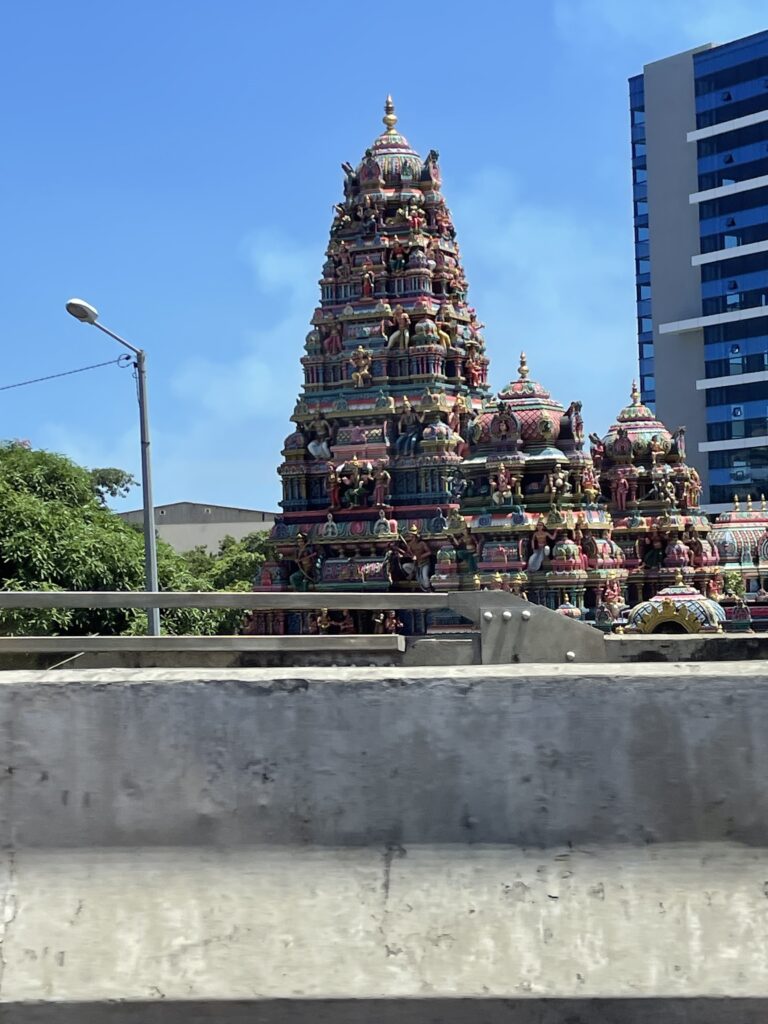We arrive in Port Louis, Mauritius’ capital. Off the southeastern coast of Africa and east of Madagascar, Mauritius has been under control of various empires from the Portuguese, Dutch, French and finally British. Today, the population is mainly made up of Indians practicing Hinduism with a smaller minority of Creoles (Black Africans) with few Chinese and French. Mauritius is constantly ranked as the most peaceful African country.

Fun fact: Though Mauritius is also renown for its beaches, did you know it was the only known habitat of the extinct dodo bird? The dod is represented as a heraldic supporter on its national coat of arms.
Mauritius has stunning white sand beaches all around the island, clear and calm lagoons perfect for snorkelling, swimming and paddleboarding, none of which we are visiting.
It’s disembarkation day for many passengers moving on but not us! Our second leg of our cruise is about to begin so today, we want to go and see the wonders of the seven coloured earth and Chamarel waterfall.
I’m not even going to talk about the ordeal to get off the ship because it was a shit-show. I’ll keep this for my final post of what’s it like to be 30 days on a cruise ship.
It doesn’t take long to find a taxi driver off the pier that will take us around the island. We negotiate a price with Tommy and off we go!
The first thing we do see is a colourful and ornately carved Hindu Temple by the side of the highway. It is one of many that we will see.

Tommy drives us to Grand Bassin, also called Ganga Talao, a crater lake in the Savanne district. It’s now the most important Hindu pilgrimage site outside of India! The thirty-three metre tall statue of Mangal Mahadev stands with his Trishula on one side of the road and the equally tall statue of Lord Durga with the golden lion on the other.
We can see some people bathing in the sacred lake



Next is the Black River Gorges National Park. It’s rolling hills, gorges and thick forest with tall waterfalls and miles of hiking trails. Monkeys and souvenirs stands greet us as we arrive. It’s a short walk to the lookout and what a sight it is! Lush emerald green forests line the deep gorge with a waterfall draining its clear waters from above. Far off, we can see the ocean blue.



We spy a little hiking path nearby and attempt a walk to the waterfall but before long, we are stopped by the remaining mud waters from the recent cyclone that went through the island only days before our arrival.

We can see the downed trees and clean-up effort still going on. It’s a miracle they have done so much in so little time.

Not too far away, is the Chamarel waterfall. It’s the tallest waterfall in Mauritius at a 100 metres.

We climb to an even higher viewpoint and it’s majestic and spectacular.

But Mother Nature is not done with us yet. Nearby is the seven coloured earth. It’s a small but impressive area of sand dunes made up of sand of seven different colours believed to be as a result of molten volcanic rock cooling at different external temperatures. Over time, erosion created the sand which is actually iron and aluminum oxide and these metals repel each other, which causes the each metal to gather in colourful stripes. Ferric oxide creates hues of red to brown while aluminum produces shades of blue to violet-blue. Can you spot all the colours? It’s red, brown, violet, green, blue, purple and yellow.



The drive back down is through twisty roads which Tommy handles like an F1 driver. The scenery is still amazing. Large vistas open up to the sea and sky. Then sharp hills serve as a background to fields of sugar cane, an important export.




Our day comes to an end as we say goodbye to Tommy and look forward to the island of Réunion!
Recent Comments